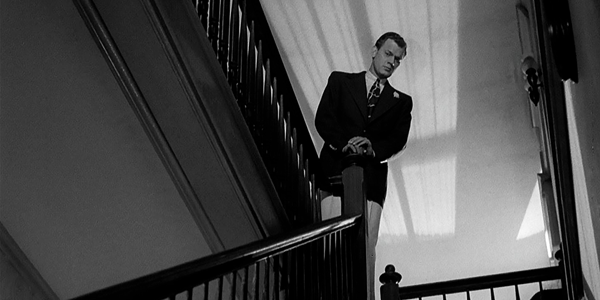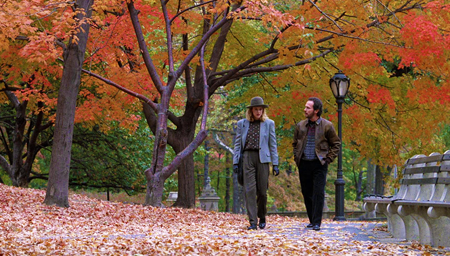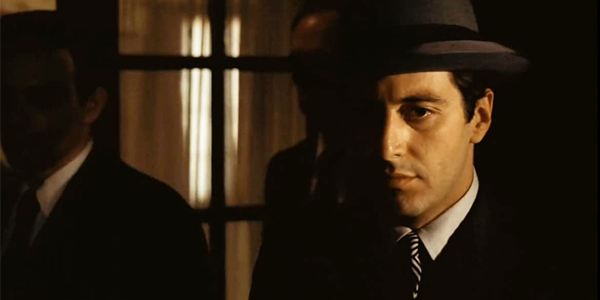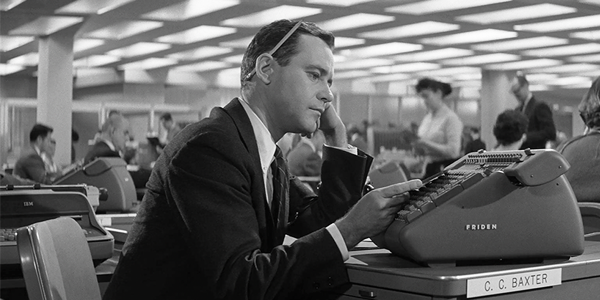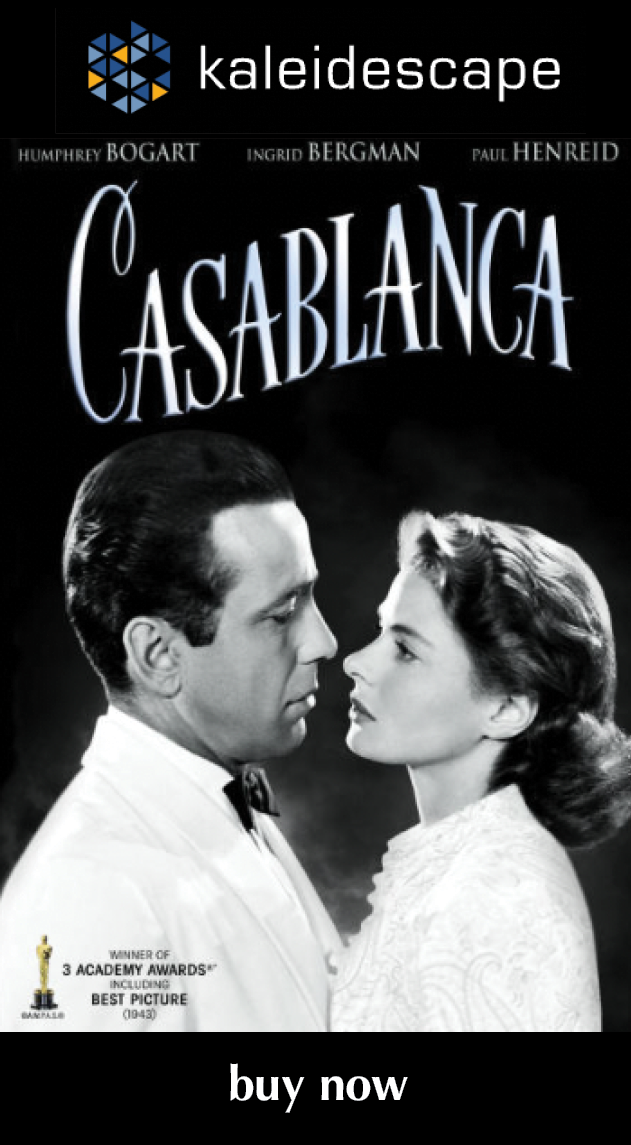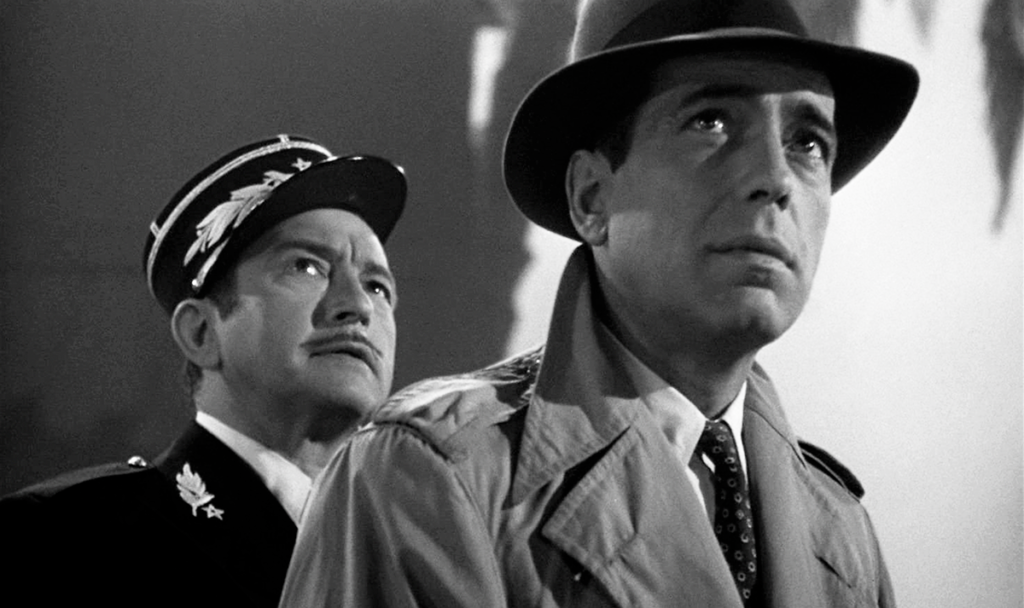
review | Casablanca
The Bogart/Bergman classic looks sharp, punchy, and clean in 4K HDR—but does it look like film?
by Michael Gaughn
November 11, 2022
You’ll know within the first three minutes if you’ll be able to roll with Casablanca in 4K HDR. The images behind the opening narration have always looked a little cheesy, even on VHS and DVD. But while the optical pan down from the minaret over a matte painting to the streets of Casablanca has always been suspect, it’s never drawn inordinate attention to itself—which is what the filmmakers, working with a less than ideal budget, were hoping for. But the painting looks laughably bad now, like an art-class backdrop for a high-school play.
And that goes right to the heart of my contention: If you come to Casablanca in 4K HDR expecting it to look like film, you’ll be quickly disillusioned. But if you’re OK with enhancements and manipulations and accents that make everything look distinctly digital—although not quite like video—you’ll be able to stick around for the duration with an untroubled conscience.
It might sound like I’m completely dumping on this transfer. I’m not. It’s possible to peer through what’s been done and glimpse enough of what Michael Curtiz, Arthur Edeson, et al. originally created to enjoy the 4K ride. But it is a little troubling to think this could be what a lot of the most popular classics will look like going forward—not as egregious as what was done to The Godfather but troubling still.
Just to make sure I wasn’t projecting some weird bias onto what I was watching, I spotchecked Casablanca against the 4K HDR presentation of Hitchcock’s Shadow of a Doubt. From the first shot, picked at random, Doubt looked like film. The image was clean, the grain was restrained, and you could see where HDR had helped open everything up, but nothing—there or elsewhere—felt over-processed, like the movie had been possessed by overeager digital gnomes.
Would Hitchcock have approved of the result? Probably not, but at no point does that transfer feel like a reinterpretation let alone a desecration. But then Doubt isn’t wrapped in the nostalgic, iconic, mythic glow that enshrouds Casablanca—which means it doesn’t have to try to fend for itself against the enormous marketing pressures that come with being that popular and that revered.
Admittedly, Edeson’s photography for Casablanca has more of a high-gloss sheen than Joseph Valentine’s for Doubt, but it’s not like Hitchcock’s film lacks visual polish and style, and it’s not like what threw me in Casablanca had much to do with things like lighting, lenses, or filters. The manipulation is most noticeable in the skin tones. I’m not sure why the HDR decided to pick on poor Paul Henreid in particular, already saddled with the sappiest role in the film, and with having to play it with a steel rod up his ass to boot, but the makeover makes it look like he’s stitched together out of Naugahyde. After a while, you feel like you’re watching a video-game Victor Laszlo. And once you’re aware of that, everything in the film starts to look plasticy with everyone resembling giant marionettes, which is more than a little creepy.
Because there were also some odd things going on with the 4K of The Apartment, I bounced that off Casablanca as well. The former must have been the product of a different bag of tricks, though, because while the look of both is off to about the same degree, the Wilder film has a tube-camera early-TV appearance that’s nowhere to be found in Casablanca. (It remains strange that The Apartment looks like an HDR transfer even though it’s straight 4K.)
I also have to once again shine a light on the curious practice of not including the original mono mix of a film with what’s supposed to be its highest-quality presentation. Theoretically, the 4K HDR version should be the one that comes closest to honoring the filmmakers’ intentions (although, as we’ve seen, that isn’t always the case). Why then give viewers no choice but to listen to a version of the soundtrack the filmmakers had nothing to do with?
I don’t have much to say about the movie itself since countless volumes, most of them paperweights, have already been written about it and trying to counter the consensual view would be like trying to push water. But I would like to emphasize how sophisticated—mature—Casablanca is, like many of the films of the ’40s—far more so than their counterparts today, which show little interest in rising above the adolescent wallowing that’s the basic price of admission to contemporary cinema.
I’d also like to echo the legions of others who’ve expressed admiration for Curtiz’ technique. This was someone who really knew how to move a camera. And no other director has ever gotten as much mileage out of the shimmer of satin and silk.
I need to be clear in closing that I don’t have a problem with 4K either with or without HDR. I’d be grateful for as many straight 4K transfers like The Good, the Band and the Ugly as possible, and we’ve heard director Barry Sonnenfeld praise the 4K transfer of When Harry Met Sally, a film he shot. As for HDR transfers, if they all at least aspired to the level of Shadow of a Doubt or Vertigo or The Shining or A Clockwork Orange, all would be right with the classic-film world. But higher resolution, with its tendency to expose both imperfections in the source material and any digital manipulation thereof, can be an awful harsh mistress. While it would of course be great if all older movies were handled as well as Doubt, etc., the treatment of Casablanca and The Godfather at one end of the spectrum and Creature from the Black Lagoon at the other suggests that anyone who deeply cares about the look of film as film is in for a bumpy ride.
Michael Gaughn—The Absolute Sound, The Perfect Vision, Wideband, Stereo Review, Sound & Vision, The Rayva Roundtable, marketing, product design, some theater designs, a couple TV shows, some commercials, and now this.
© 2025 Cineluxe LLC


